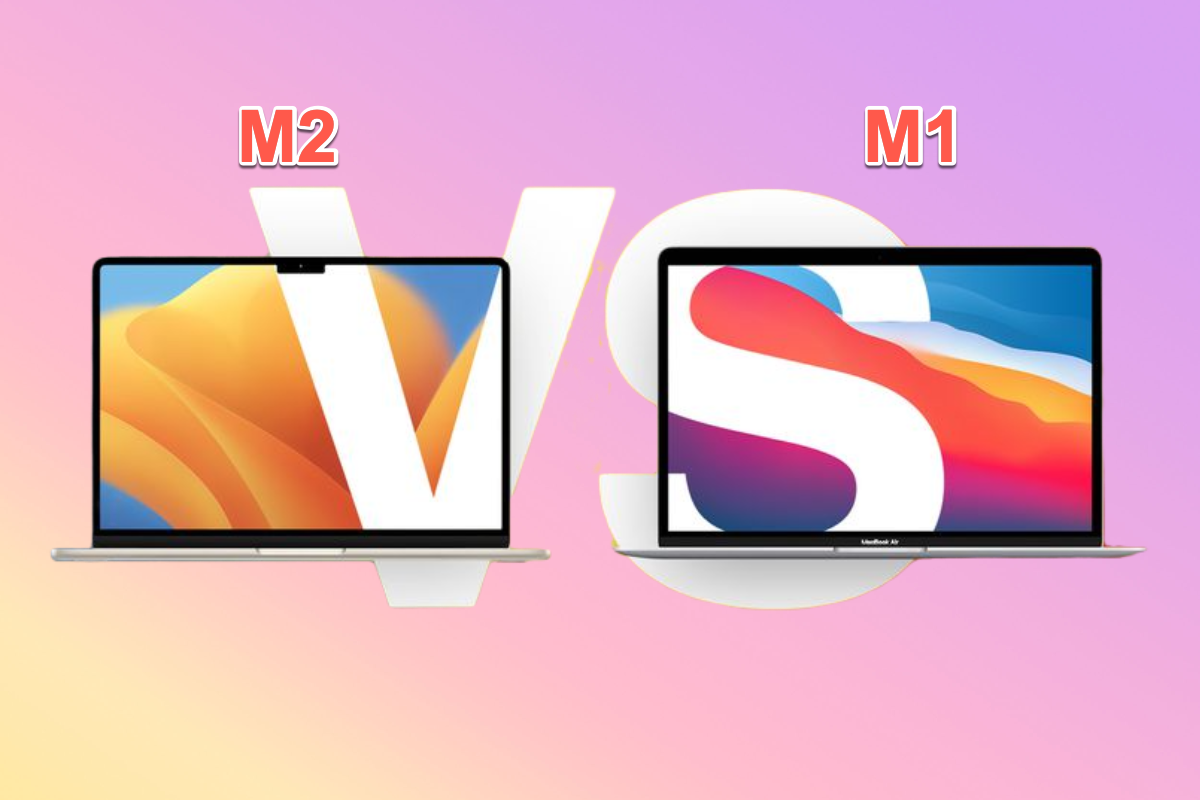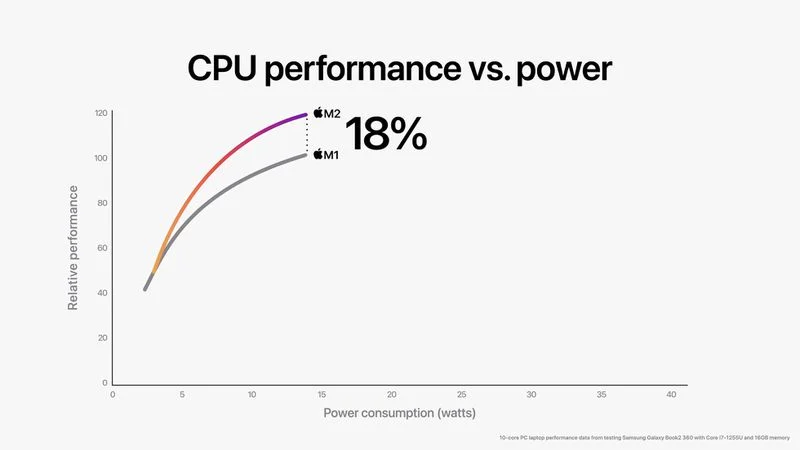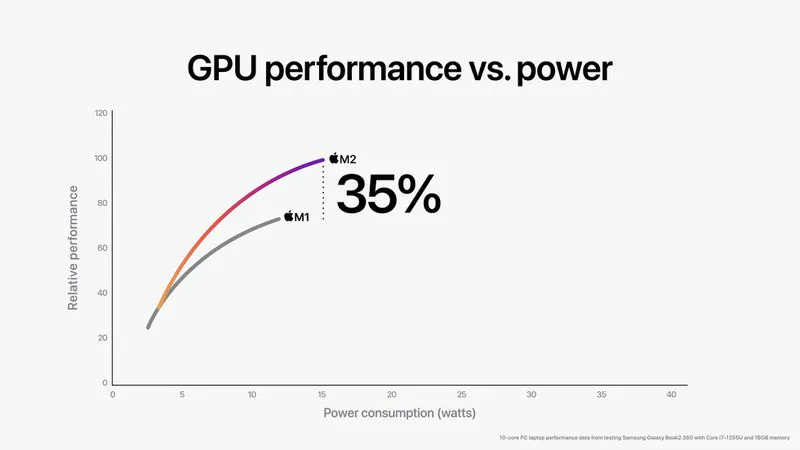Written by
Vain RoweIn June 2022, Apple released the second generation custom silicon chip -- M2 chip. Compared to the first-generation silicon chip, the M2 chip brings higher performance and stronger enhancements in CPU, GPU, memory bandwidth, and so on. This article from iBoysoft will articulate the improvements of the M2 chip between M2 vs M1 Mac in detail.

Things you should know about the M1 chip
In late 2020, Apple released the first Mac model with Apple Silicon M1, which indicates that Apple has transited from Intel-based Macs to Macs with silicon chips developed by Apple.
Unlike the Intel chips built on the x86 architecture, the Apple Silicon M1 applies an Arm-based architecture, which keeps the same as the A-series chips that Apple designs for iPads and iPhones for many years.
Compared to the Intel-based Macs, Apple Silicon M1 Macs improve the performance and efficiency of the device. With the high integration and enhanced cores in the Apple Silicon chip, a smoother and faster running speed becomes reality.
Meanwhile, the M1 chip has a built-in Secure Enclave, which manages Touch ID, and a storage controller with AES encryption hardware, ensuring a faster and more secure SSD performance.
Science and technologies are upgrading constantly, and so are silicon chips. Indeed, Mac M1 vs M2 battle brings you unexpected results. Keep reading and remember to share this article!
Differences between M2 vs M1 Mac: What are the improvements?
With the publication of the M2 custom silicon chip, many Mac users wonder what new features M2 brings. Now, you can run an eye over the table below to have a rough understanding:
| M1 Chip | M2 chip |
| Made with TSMC's 5nm process (N5) | Made with TSMC's enhanced 5nm process (N5P) |
| 16 billion transistors | 20 billion transistors |
| 4 high-performance "Firestorm" cores | 4 high-performance "Avalanche" cores |
| 4 energy-efficient "Icestorm" cores | 4 energy-efficient "Blizzard" cores |
| 3.2GHz CPU clock speed | 3.49GHz CPU clock speed |
| 8-core GPU | 10-core GPU |
| Support for 8GB or 16GB unified memory | Support for 8GB, 16GB, or 24GB unified memory |
| 68.25GB/s memory bandwidth | 100GB/s memory bandwidth |
| 16-core Neural Engine (11 TOPS) | 16-core Neural Engine (15.8 TOPS) |
From this table, it's obvious that the M2 chip has greater enhancements and improvements than the M1 chip.
Fabrication process and transistors
Like the A14 Bionic's features, the M1 chips are designed with the TSMC's first generation 5nm fabrication process, while the M2 chips apply the second generation 5nm fabrication process of TSMC, just keeping the same as the A15 Bionic chip.
Meanwhile, the M2 chips are featured with 20 billion transistors -- 25 percent more than the M1 chips, and that's what makes the M2 chip perform better and more efficiently than the M1 chips.
CPU performance
Although both M1 chips and M2 chips have four high-performance cores and four energy-efficient cores, the M2 chips are known for the "Avalanche" and "Blizzard" which come from the A15 Bionic chips, while M1 chips are designed with "Firestorm" and "Icestorm" coming from the A14Bionic chips, more low-end than M2.
The difference between high-performance cores and high-efficient cores results in an 18 percent stronger multithreaded performance of M2 chips than M1 chips.
Put simply, the CPU determines the efficiency of your device, if you encounter Mac running slow problem, it's likely your Mac has high CPU usage. You can check CPU usage both on M1 Macs and M2 Macs via Activity Monitor to have a comparison.

GPU performance
Compared to M1 chips, M2 chips have two more GPU cores. GPU works in processing the graphics on Mac, with 10 GPU cores, the graphic processors on M2 chips are absolutely boosted and enhanced, and the new ISP (Image Signal Processor) of the M2 ensures better image noise reduction certainly.
According to Apple, the M2 chips have up to 25 percent higher graphic performance than the M1 chips, which even can exceed 35 percent better graphic performance at maximum power.
In the Geekbench Metal benchmarks, the M2 chips have scored 30,627, while the M1 chips have scored 21,001, proving that M2 chips are better in graphic processing than M1 chips.
If you are particular about the graphic processing ability, eGPU for Mac might meet your requirements, which can restore the primary color and clear pixels of pictures maximumly.

Media Engine
M1 chips and M2 chips are featured with a video decode and encode engine for hardware-accelerated H.264 and HEVC, while M2 chips develop extra ProRes, ProRes RAW, and Higher-bandwidth video decode engine.
The ProRes and ProRes RAW engines are capable of playing multi streams of 4K and 8K video at the same time, and the Higher-bandwidth video decoder is supported for 4K, 8k, and HEVC video.
Unified Memory
M1 Macs support 8GB and 16GB unified memory in configuration, while M2 Macs provide 24GB unified memory. M2 Macs can deliver 100GB per second of unified memory bandwidth, which is a great promotion compared to the M1 Mac's 68.25GB per second.
Neural Engine
Thanks to the excellent Neural Engine, the Apple Silicon M1 has surprised all with its AI and ML capabilities, which are able to process up to 11 trillion operations per second. However, the Apple Silicon M2 has upgraded to 15.8 trillion operations per second -- 40 percent faster than the M1.
Meanwhile, the Apple Silicon M2 chip adds an extra layer of protection, which is more secure than the M1 chip. Share this article now!
Let more people understand the differences between M1 and M2 chip!
Does the Apple Silicon M2 chip have any shortcomings?
Indeed, the M2 chips exceed the M1 chips in many aspects, but every bean has its black. In fact, Apple has changed the SSD architecture for the base model MacBook Air.
Instead of the dual-channel storage featured in the Apple Silicon M1, the Apple Silicon M2 takes advantage of single-channel storage, thus, the overall performance of the M2 Mac works more slowly than the M1 device generally, according to Benchmarks.
However, with the increasing price, Apple has added more storage inches to make the M2 Macs closer to the 14-inch MacBook Pro with its outstanding performance. So, you can totally ignore this slight shortcoming in the process of usage.
Conclusion
All in all, M2 Macs really have significant improvements over M1 Macs, including CPU performance, GPU performance, fabrication process, transistors, media engine, and unified memory aspects. If you're interested and have enough budget, you can purchase an M2 MacBook Air to experience these improvements, which will surprise you greatly.
Share this wonderful article with more people!

